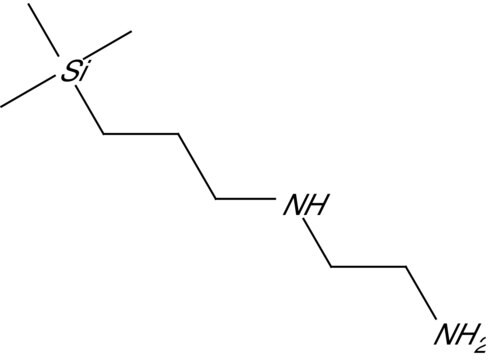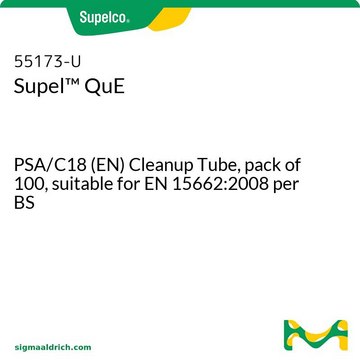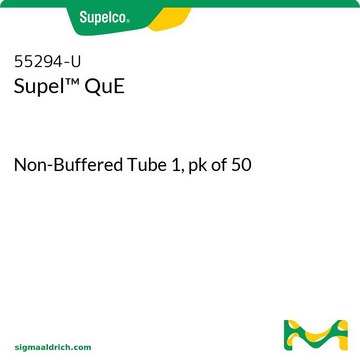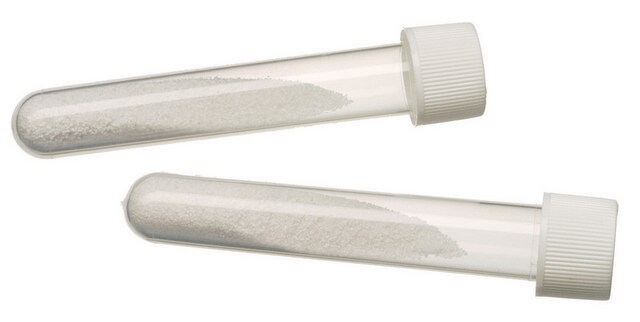Wszystkie zdjęcia(1)
Key Documents
55172-U
Supel™ QuE QuEChERS tube
PSA (EN) Cleanup Tube, pack of 100, suitable for EN 15662:2008 per BS
Synonim(y):
QuEChERS
Zaloguj sięWyświetlanie cen organizacyjnych i kontraktowych
About This Item
Kod UNSPSC:
41115712
NACRES:
NB.21
Polecane produkty
product name
Supel™ QuE, PSA (EN) Cleanup Tube, pack of 100, suitable for EN 15662:2008 per BS
Materiały
polypropylene tube
Poziom jakości
agency
suitable for BS EN 15662:2008
linia produktu
Supel™
skład
magnesium sulfate, 150 mg
Supelclean™ PSA, 25 mg
opakowanie
pack of 100
metody
QuEChERS: suitable
pojemność probówki reakcyjnej (do wirowania)
2 mL
grupa aktywna macierzy
PSA phase
Zastosowanie
food and beverages
Szukasz podobnych produktów? Odwiedź Przewodnik dotyczący porównywania produktów
Opis ogólny
Dispersive SPE (dSPE), often referred to as the "QuEChERS" method (Quick, Easy, Cheap, Effective, Rugged, and Safe), is modern sample prep technique that is becoming increasingly popular in the area of multi-residue pesticide analysis in food and agricultural products.
Using the QuEChERS method, food/agricultural samples are first extracted with an aqueous miscible solvent (e.g., acetonitrile) in the presence of high amounts of salts (e.g., sodium chloride and magnesium sulfate) and/or buffering agents (e.g. citrate) to induce liquid phase separation and stabilize acid and base labile pesticides, respectively. Upon shaking and centrifugation, an aliquot of the organic phase is subjected to further cleanup using SPE. Unlike traditional methods using SPE tubes, in dispersive SPE, cleanup is facilitated by mixing bulk amounts of SPE (e.g., Supelclean PSA, ENVI-Carb, and/or Discovery DSC-18) with the extract. After sample cleanup, the mixture is centrifuged and the resulting supernatant can either be analyzed directly or can be subjected to minor further treatment before analysis.
Supelco carries a line of vials and centrifuge tubes containing pre-determined amounts of salts and SPE sorbents to support the most common method configurations used today.
Using the QuEChERS method, food/agricultural samples are first extracted with an aqueous miscible solvent (e.g., acetonitrile) in the presence of high amounts of salts (e.g., sodium chloride and magnesium sulfate) and/or buffering agents (e.g. citrate) to induce liquid phase separation and stabilize acid and base labile pesticides, respectively. Upon shaking and centrifugation, an aliquot of the organic phase is subjected to further cleanup using SPE. Unlike traditional methods using SPE tubes, in dispersive SPE, cleanup is facilitated by mixing bulk amounts of SPE (e.g., Supelclean PSA, ENVI-Carb, and/or Discovery DSC-18) with the extract. After sample cleanup, the mixture is centrifuged and the resulting supernatant can either be analyzed directly or can be subjected to minor further treatment before analysis.
Supelco carries a line of vials and centrifuge tubes containing pre-determined amounts of salts and SPE sorbents to support the most common method configurations used today.
Informacje prawne
Supel is a trademark of Sigma-Aldrich Co. LLC
Supelclean is a trademark of Sigma-Aldrich Co. LLC
This page may contain text that has been machine translated.
Kod klasy składowania
13 - Non Combustible Solids
Klasa zagrożenia wodnego (WGK)
WGK 1
Wybierz jedną z najnowszych wersji:
Masz już ten produkt?
Dokumenty związane z niedawno zakupionymi produktami zostały zamieszczone w Bibliotece dokumentów.
Klienci oglądali również te produkty
Maria Teresa Salles Trevisan et al.
Journal of chromatography. A, 1512, 98-106 (2017-07-20)
An analytical method using a quick, easy, cheap, effective, rugged and safe (QuEChERS) procedure for multi-residue determination of 52 pesticides in coffee leaf extractshas been developed and validated according to SANTE/11945/2015 guidelines. Different sorbent combinations for dispersive solid phase extraction
David Moreno-González et al.
Talanta, 128, 299-304 (2014-07-26)
In this study a fast, selective and sensitive multiresidue method based on QuEChERS methodology has been evaluated and validated for the determination of carbamate pesticides, in edible vegetable oils by UHPLC-MS/MS. A new clean-up sorbent, Supel(TM) QuE Z-Sep(+), has been
Lijun Han et al.
Journal of separation science, 39(23), 4592-4602 (2016-11-03)
A novel carbon/zirconia-based material, Supel
Nasz zespół naukowców ma doświadczenie we wszystkich obszarach badań, w tym w naukach przyrodniczych, materiałoznawstwie, syntezie chemicznej, chromatografii, analityce i wielu innych dziedzinach.
Skontaktuj się z zespołem ds. pomocy technicznej









